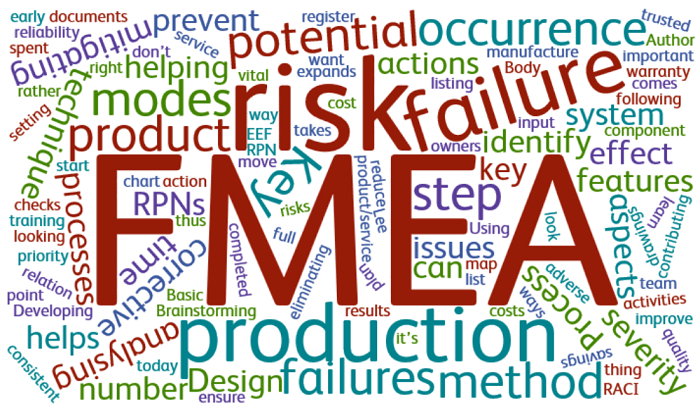EQMS Blog

How FMEA Training Reduce Issues Within An Organisation
For any organisation, improving the quality and reliability of their products and services should be a top priority. FMEA training is important for any organisation ready to transform from the traditional test for reliability to a more improved and effective production process. While the traditional test for reliability has been attained through deep testing and methods such probability reliability modelling, FMEA training solves the challenge of developing and testing quality and reliability early in the development cycle.
What is FMEA
Failure modes and effect analysis (FMEA) is a gradual and steady approach for detecting every possible failure in a design, whether a manufacturing (or assembly) process, a product or service.
Failures are defect or errors in production, particularly ones that affect the customer. Failures can either be potential or actual. Failures need to be prioritized based on the severity of their consequences, the frequency of their occurrence and how easy they can be detected. The objective of FMEA training is to be able to detect failures early in development process and take actions to reduce or eradicate these failures according to their priority.
As a Lean Six Sigma tool for solving problems, FMEA training can help to identify and eliminate or reduce concerns or errors very early in the development process of a product or service delivery. It is logical way to prospectively evaluate a process for probable ways in which failure or defect can occur, and consequently redesign the process to eliminate the possibility of failure or reduce it to the barest minimum.
Basic Procedure for Failure Mode and Effect Analysis (FMEA)
The basic steps for executing a Failure Mode and Effect Analysis include;
- Assemble the FMEA team
- State the ground rules
- Collect and review important information
- Identify the processes or items to be analysed
- Detect the failures and identify their effects, causes and their controls
- Carry out risk assessment
- Prioritize and allocate corrective actions
- Execute corrective actions
- Re-evaluate risk
- Review ad update the analysis as needed
When FMEA is Necessary
- When a product, process or service is being designed.
- When an existing product, process or service is being implemented in a new way.
- Planning of improvement goals for an existing product, process or service.
- When evaluating failures resulting from existing product, process or service.
Benefits of FMEA Training
The failure modes and effect analysis (FMEA) methodology has been integrated in different ways for different uses.
Improved Product and Services
FMEA can contribute to the improved designs for processes and product within an organisation. Consequently, resulting in better quality, higher reliability increased safety and improved customer satisfaction and lower costs.
Improved Quality Assurance Procedures
FMEA can also be used to create new and optimize existing maintenance plans for repairable systems and also contribute control plans, routines and other quality assurance measures. FMEA training helps you detect issues fast enough in the production stage as it gives you the power to put in place quality assurance standards and effective control plans.
Provides Knowledge Base for the Future
With FMEA training, an organisation will be able to prevent future failure and a baseline for eliminating them. FMEA provides a knowledge bank of failures that have occurred over time and corresponding corrective action which serves as a resource for troubleshooting in the future. It will also serve as a training tool and process guide for new employees within the organisation.
Knowledge base can be developed with a tool as simple as an Excel spreadsheet or paper form used to record FMEA analysis over time. FMEA training immensely reduce the occurrence of issues or failures within an organisation because employees will be able to identify faults early in the development process.
FMEA training gives one the understanding of how to use the right process and tool at the appropriate time. It improves the quality of products and services, reduce cost and leads to preventing a failure before a product or service is dished out to the customers.
If you are interested in our FMEA Training to improve the risk mitigation capability of your workforce end reduce issues from occurring, please contact us for a free quote.

Request a free consultation
Contact us to discuss your needs and see how we can support to reach your goal.

Recent posts

In today's digital age, businesses are constantly exposed to various cyber threats. As a result, companies must adopt a proactive approach to cybersecurity to prevent data breaches, theft, and other...

Quality management systems are essential in ensuring that organisations can deliver quality products and services consistently. The International Organisation for Standardization (ISO) developed the ISO 9001 standard to help organisations...

ISO 14001 is a globally recognised standard for environmental management systems (EMS) that helps organisations manage their environmental impact and improve their sustainability performance. Obtaining this certification demonstrates a company's...
Just a Few of Our Clients
Request a Free Consultation
Contact us to discuss your needs and see how we can support to reach your goal.












